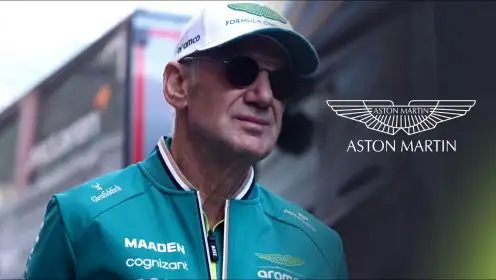McLaren DSQ raises questions about ‘random’ post-race scrutineering

Alex Albon wants the FIA to check every car after the grands prix
Alex Albon has questioned the FIA’s “random” post-race scrutineering, saying the only way to ensure a “fair game” is to check every car after a grand prix.
Last time out in Las Vegas, McLaren crossed the line second and fourth only to be disqualified when both MCL39’s skid planks were found to have suffered excessive wear.
Alex Albon: I don’t like that it’s random
Instead of the MCL39s only being weighed at the end of the grand prix, Lando Norris and Oscar Piastri’s cars were put through more extensive testing that led to technical delegate Jo Bauer referring McLaren to the stewards for excessive plank wear.
The stewards revealed Norris had two measurements that were below the 9mm skid block limit as the front right skid block was 8.88m and his right rear was 8.93mm. As for Piastri, he had three illegal measurements, as his front left was 8.96mm, the front right was 8.74mm and the right rear was 8.90mm.
More on McLaren’s double DNF in Las Vegas
👉 Harakiri! What international media is saying about McLaren after Las Vegas DSQ
👉 Could McLaren’s Las Vegas DSQ seal Oscar Piastri’s role as No.2?
McLaren has since revealed the “specific cause” was “unexpected occurrence of extensive porpoising, inducing large vertical oscillations of the car”.
Team principal Andrea Stella insisted it was not the “excessive or unreasonable chase of performance”.
Hours later, Norris accepted that teams need to “push things to the limit”, but the championship leader was quick to clarify “that’s not meaning that’s exactly what we did in Las Vegas”.
However, Albon says that is what all the teams do, they take into account the “limits” because running the car even a millimetre closer to the ground, increases performances.
“We all have to factor in limits,” the Williams told PlanetF1.com and other media outlets in Qatar.
“There’s a lot of lap time in these cars being a mil lower than wherever. But of course, everyone makes mistakes, and I get that bit. But, you know, these cars are incredible now.
“We are setting ride heights down to what winds you get for the next day in the race. If you get a headwind into a main straight, it completely transforms your ride height for the weekend in terms of, obviously, a few more points up with a headwind puts the car a lot lower, and, yeah, you get porpoising and then you need to make adjustments to the porpoising as well and estimates.
“I think it is really tough, the regulation set. Especially on Sprint weekends or weekends where we have not much running, like Vegas.
“You have to take the safe approach. And sometimes you, you finish on Sunday as a team, kind of kicking yourself because you have hardly any plank wear, and you feel like you could have optimised the weekend more. But that’s just the way that these, these rule sets are.”
For Albon, though, the bigger issue is not the limits, it’s the FIA’s post-race scrutineering procedures.
While every car that completes the grand prix is weighed, the FIA randomly selects a number of cars to undergo post-race checks in light of time constraints in getting to the next race, while one car is put through a thorough scrutineering.
Albon reckons that is part of the problem, the random checks.
“I mean,” he said, “we could run these things to the deck if we wanted to and have no legality issues, but then we’re all finding illegal performance.
“I think the main thing for me is, I don’t like that it’s random. I’d almost rather have 20 cars get checked every weekend and then you’d have a fair game, but it’s that randomly selected version that’s a bit tricky.
“But yeah, I mean rules are rules.”
Looking ahead to next season, Albon believes the new regulatory set will reduce, but not eliminate, plank wear being a factor in performance.
“It’ll be less of a talking point,” he said. “I think the philosophy of at least one part of the car, whether it’s the front or the rear of the car being as low as possible, generally, still applies.
“So it will be much less of a talking point, but it will still be there.”
Additional reporting by Matt Coch and Thomas Maher





